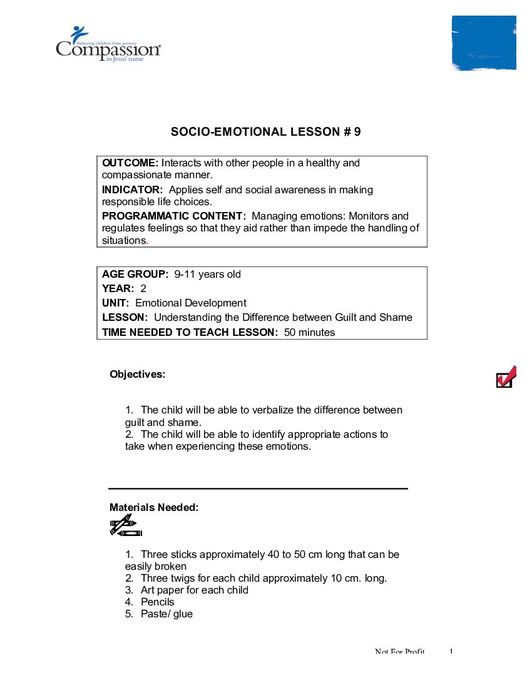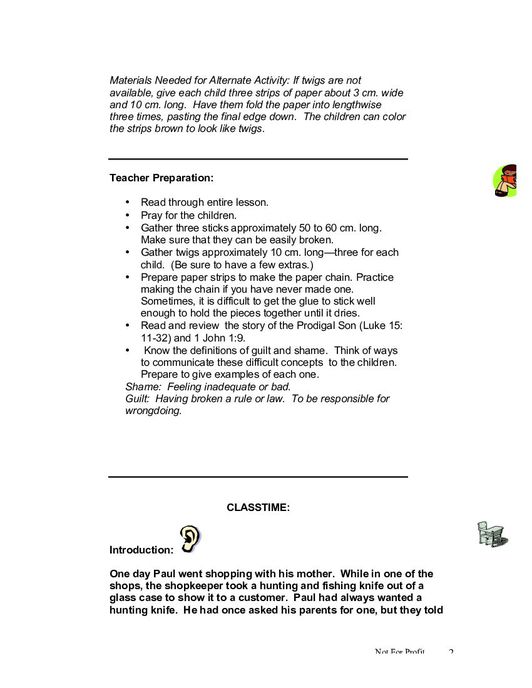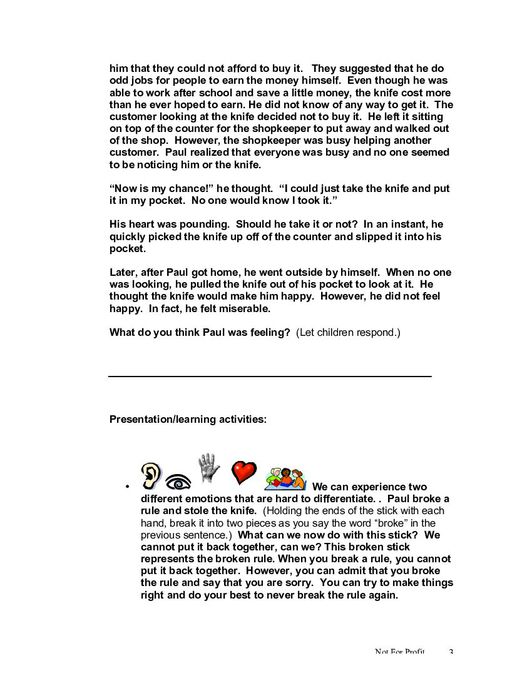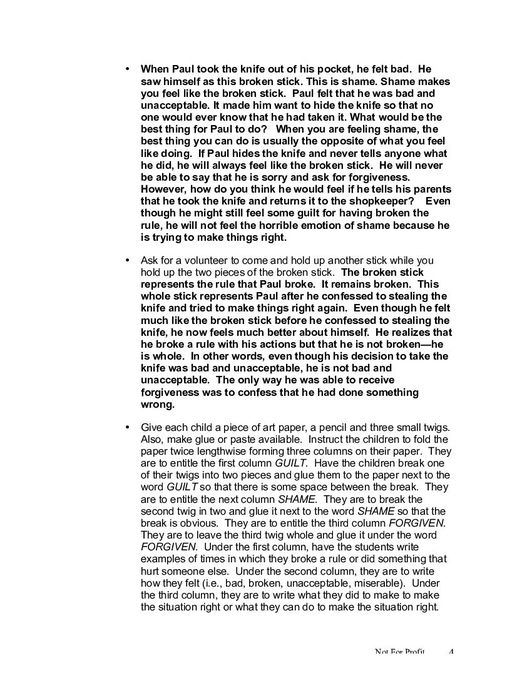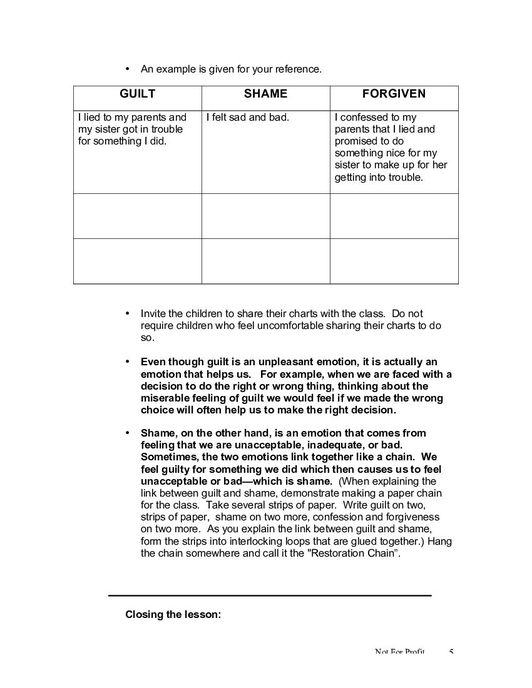Understanding the Difference Between Guilt and Shame

Preview
Login Required
You must be a member of the ForChildren.com community to download resources. Click the buttons below to sign in or sign up!
| Category | Socio-Emotional Development |
| Copyright Owner | Compassion International |
The lesson “Understanding the Difference Between Guilt and Shame” teaches about personal responsibility as well as managing and monitoring feelings and emotions, specifically understanding how healthy guilt for actions differs from feeling ashamed as a person. The children will be able to verbalize the difference between the two emotions, as well as identify appropriate actions to take when experiencing the feelings, specifically asking the Lord for forgiveness. The lesson includes guided instructions for the teacher, including preparation, a script, and suggested activities to facilitate further learning in a fun and interactive manner. This lesson is designed for children between 9-11 years, and is the ninth lesson in the 2nd year “Emotional Development” unit.
Related Documents
-
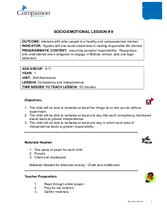
Competency and Independence
The lesson “Competency and Independence” teaches about personal responsibility and the importance of engaging in Biblical and Godly actio… -
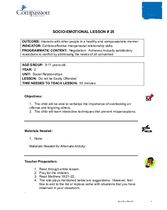
Do Not Be Easily Offended
The lesson “Do Not Be Easily Offended” helps children to further understand the benefits of strong interpersonal skills when relating to others, as w… -
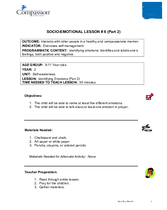
Identifying Emotions (Part 2)
The lesson “Identifying Emotions (Part 2)” teaches children to further identify and monitor feelings and emotions to aid rather than impede in the ha… -
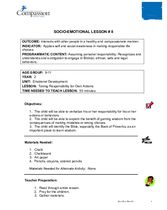
Taking Responsibility for Own Actions
The lesson “Taking Responsibility for Own Actions” teaches children about personal responsibility and moral obligations as they relate to personal be… -
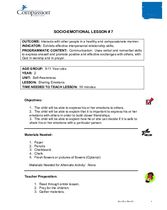
Sharing Emotions
The lesson “Sharing Emotions” continues to teach children about the importance of communication in interpersonal relationships and how to appropriate… -
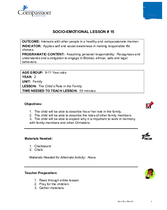
The Child’s Role in the Family
The lesson “The Child’s Role in the Family” teaches children more about self-awareness and identity, as well as about responsibility as part of a fam… -
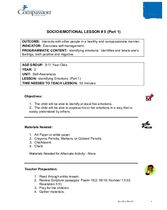
Identifying Emotions (Part 1)
The lesson “Identifying Emotions (Part 1)” teaches children how to recognize and identify emotions, both positive and negative. Each child will be ab… -
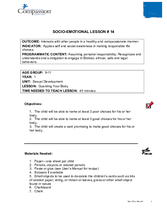
Guarding Your Body
The lesson “Guarding Your Body” teaches children social and self awareness and making responsible life choices, as they are related to th… -
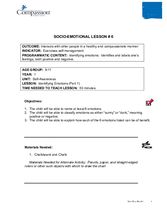
Identifying Emotions (Part 1)
The lesson “Identifying Emotions (Part 1)” teaches children to monitor and regulate feelings to aid rather than impede in the handling of… -
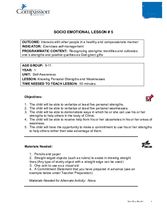
Knowing Personal Strengths and Weaknesses
The lesson “Knowing Personal Strengths and Weaknesses” teaches children how to recognize and identify God-given gifts and cultivate those…
Ang Tanglaw ay ang learning management system (LMS) ng Compassion International - Philippines. Ang nilalaman nito ay iba't ibang learning materials tungkol sa iba't ibang paksa upang matulungan ang mga manggagawang simbahang katuwang ng Compassion sa Pilipinas. Ang training team ng Compassion International - Philippines ay siyang tumutulong sa buong programa ng holistic child development sa pamamagitan ng pagbibigay ng pagsasanay at kaalaman sa iba't ibang kaparaanan.





